Climate Change and Stormwater: The Perfect Storm
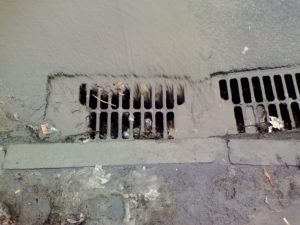 Stormwater runoff is a concern year-round, but even more so in the spring when snow is melting and rain is abundant, particularly in humid continental climates. Stormwater starts as precipitation such as snow, sleet, and rain, which lands on natural ground cover such as forests, grass, or gardens. In a natural environment, stormwater soaks into the ground and is filtered by layers of dirt and rock, then finds its way to our groundwater and drinking water supply. Due to urbanization, stormwater in developed areas does not land on natural ground cover but instead washes off roads, driveways, parking lots, rooftops, and other impervious surfaces, becoming stormwater runoff. Stormwater runoff picks up road salt, chemicals, oil, bacteria, sewage, sediment, and garbage, then washes these pollutants into ditches and storm drains, contaminating our streams, rivers, ponds, and lakes. To make matters worse, climate change exacerbates stormwater runoff and contributes greatly to the impairment of surface water supplies.
Stormwater runoff is a concern year-round, but even more so in the spring when snow is melting and rain is abundant, particularly in humid continental climates. Stormwater starts as precipitation such as snow, sleet, and rain, which lands on natural ground cover such as forests, grass, or gardens. In a natural environment, stormwater soaks into the ground and is filtered by layers of dirt and rock, then finds its way to our groundwater and drinking water supply. Due to urbanization, stormwater in developed areas does not land on natural ground cover but instead washes off roads, driveways, parking lots, rooftops, and other impervious surfaces, becoming stormwater runoff. Stormwater runoff picks up road salt, chemicals, oil, bacteria, sewage, sediment, and garbage, then washes these pollutants into ditches and storm drains, contaminating our streams, rivers, ponds, and lakes. To make matters worse, climate change exacerbates stormwater runoff and contributes greatly to the impairment of surface water supplies.
How Climate Change Exacerbates Stormwater Runoff
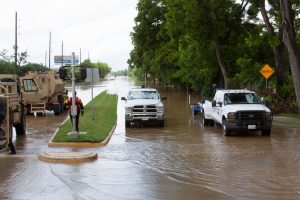
A study by scientists from the National Center for Atmospheric Research in Boulder, Colorado published in December 2016 indicates that climate change will likely bring more intense, frequent, damaging storms to all areas of the country, particularly to the Northeast and the Gulf Coast. In fact, studies show that storms in these areas could become up to five times as frequent and bring 70% more rain if greenhouse gas emissions are not reduced. Storms of this magnitude will likely cause flash floods, landslides, and an overabundance of stormwater runoff – far more than current municipal stormwater systems are designed to handle.

The study also indicated that regions such as the Pacific Northwest and central United States will likely become drier, but with more intense, extreme rainfall. We have already seen this in northern California, where the Oroville Dam suffered serious damage after drenching rains in February. Prior to these rains, the state had been plagued by severe drought. Rising temperatures increase atmospheric humidity, causing extreme precipitation and an increased risk of flash flooding. And while it may seem counterintuitive, drought only intensifies the problem. Drought leads to less vegetation and more firmly packed soil, both of which inhibit infiltration. When heavy rains follow drought, soil tends to erode, washing remaining plants away as well. Regular, gentle rain is the key to restoring soil, and without it, soil degradation will only intensify.
Managing Increased Stormwater Runoff
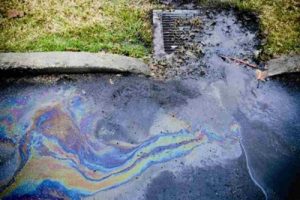 Unfortunately, the above-mentioned factors will likely lead to an increase in stormwater runoff and its accompanying problems. Municipal stormwater systems, already faced with increased nutrient regulations, will likely become overwhelmed, resulting in backups, localized flooding, and increased runoff of contaminants such as bacteria and nutrients into waterways. Also, combined stormwater and wastewater systems overwhelmed by extreme precipitation will release more combined sewer overflows (CSOs) into our rivers, lakes, and streams, degrading water quality and affecting aquatic life. At the same time, drought exacerbates the problem by lowering water levels, leading to more concentrated levels of pollutants in our waterways. These combined factors cause water quality deterioration and create major problems for water treatment plants. Already facing dwindling budgets, municipalities will have difficulty meeting water quality standards if stormwater runoff continues to increase unabated.
Unfortunately, the above-mentioned factors will likely lead to an increase in stormwater runoff and its accompanying problems. Municipal stormwater systems, already faced with increased nutrient regulations, will likely become overwhelmed, resulting in backups, localized flooding, and increased runoff of contaminants such as bacteria and nutrients into waterways. Also, combined stormwater and wastewater systems overwhelmed by extreme precipitation will release more combined sewer overflows (CSOs) into our rivers, lakes, and streams, degrading water quality and affecting aquatic life. At the same time, drought exacerbates the problem by lowering water levels, leading to more concentrated levels of pollutants in our waterways. These combined factors cause water quality deterioration and create major problems for water treatment plants. Already facing dwindling budgets, municipalities will have difficulty meeting water quality standards if stormwater runoff continues to increase unabated.
Fortunately, successfully managing stormwater runoff is a realistic goal with proper planning and incorporation of best management practices (BMPs). Systems that proactively develop strategies to address stormwater runoff will find themselves far better prepared to manage both increased stormwater and more stringent regulations. Stormwater management strategies include the following:
-
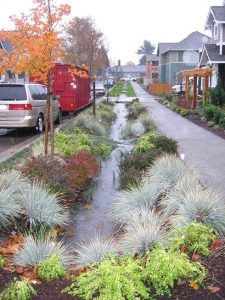
Rain gardens are a beautiful and sustainable way to manage stormwater. Increase the use of Low Impact Development. Low Impact Development (LID), also known as green infrastructure, is a stormwater management approach that maintains natural hydrology during site development. LID minimizes impervious surfaces and utilizes existing natural site features along with conservational controls to manage stormwater. Examples of LID design include bioretention basins, grassed swales, and rain gardens.
- Minimize impervious surfaces. Impervious surfaces such as roads, parking lots, and rooftops prevent infiltration. Install pervious pavements on driveways and walkways, stormwater bumpouts on streets, and tree boxes on sidewalks. Also, disconnect impervious surfaces by installing grass or gravel buffer zones. Lastly, plant green roofs and roof gardens to greatly reduce stormwater runoff while enhancing the environment.
- Protect and create wetlands. Wetlands are of great value due to their ability to retain water and recharge groundwater. Constructed wetlands provide the same benefit as natural wetlands and help to mitigate water pollution.
-
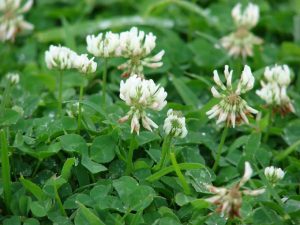
White clover is native to New England, drought resistant, and soft under the feet. Landscape with native flora. Native trees and plants provide habitat for and attract birds, butterflies, and other beneficial local wildlife, and are acclimated to local rainfall amounts and climate. Unlike turf grass, native plants require very little maintenance because they are naturally resistant to local pests and disease. Because they do not need fertilizers, pesticides, or supplemental watering, they are easy and inexpensive to maintain and are environmentally friendly.
- Plant trees. Trees help to manage stormwater by reducing erosion and runoff along streams and waterways. They also help to cool urban areas and improve the air quality.
- Separate combined sewer overflows. By separating the collection of sewage and stormwater, overflow of sewer systems and treatment plants during rainy periods prevents the mixing of the surface runoff, which is lightly polluted, with municipal wastewater, which is highly polluted.
In Conclusion
Climate change and stormwater runoff together create the perfect storm for water quality degradation. We are already seeing the effects of climate change on our nation’s infrastructure, and unless we address these complications now, we will likely find ourselves increasingly burdened by boil water orders and expensive water treatment projects. Fortunately, by proactively making some simple and largely inexpensive environmental improvements, we can protect our nation’s water bodies for future generations.
